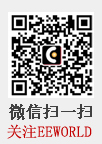|
The OP
Published on 2015-1-27 11:17
Only look at the author
This post is from Talking
| ||
|
|
||
This post is from Talking
| ||
|
|
||
|
|
This post is from Talking
| ||
|
|
||
|
|
This post is from Talking
| ||
|
|
||
|
|
|
5
Published on 2015-1-27 14:19
Only look at the author
This post is from Talking
| ||
|
Personal signature
So TM what......? |
||
|
|
|
6
Published on 2015-1-30 12:45
Only look at the author
| |
|
|
|
|
|
荣誉会员勋章
曾经的版主且威望大于2000,或对EEWORLD论坛有突出贡献的坛友
Guess Your Favourite
Just looking around
-
FireBeetle 2 ESP32-C5 Review + LED Light Control
TheFireBeetle2ESP32-C5developmentboardisequippedwithanLEDlightfortestingtheGPIOportThepintowhichthetouchmoduleisconnectedisGPIO26,anditsconnectionisshowninFigure1.Figure1DeviceconnectionTheprogramandrunningstatusofrealizingkeycontrolofLEDar ...
- [2025 DigiKey Innovation Contest] Fitness Visual Monitor Unboxing Review
- [2025 DigiKey Innovation Contest] Smart Robotic Arm Assistant on the Desktop - DigiKey Unboxing
- Problems with ARM STD system.bin file?
- ] DS1302 clock chip Chinese
- I need help with the com16550 driver!!! Please help me if you have worked on this driver!!! Thank you!!!
- Review of STM32's "useless" RAM debugging
- Discussion on reducing the use of global variables in embedded C language
Find a datasheet?
EEWorld Datasheet Technical Support
Hot tag
Related articles more>>
New Posts
- Problems with STM32 and passive buzzer playing sound
- Embedded Tutorial_DSP Technology_DSP Experiment Box Operation Tutorial: 2-28 Building a Lightweight WEB Server Experiment
- OPA847IDBVR op amp domestic replacement
- AG32VF407 Test UART
- [Digi-Key Follow Me Issue 2] Chapter 1: Sharing on receiving the goods
- What model is this infrared receiver? Which model can be used instead? Thank you
- Selling brand new unopened ZYNQ 7Z020 FPGA core board
- The LORA module used in the lithium battery powered water meter setting can save energy when 100 water meters are installed in one corridor.
- I would like to ask, when a port is set to RX0, is it necessary to set the input and output direction of this port?
- Why is this year so difficult? It’s even more difficult than during the pandemic. I’m 30 and facing unemployment. I’m so confused.
- Ask about the voltage regulator test question
- [Xiaohua HC32F448 Review] About Xiaohua Semiconductor's UART interrupt sending and PRINTF construction and redirection
- 【BIGTREETECH PI development board】 HDMI output test
- 【BIGTREETECH PI development board】+08. Audio test (zmj)
- [Xiaohua HC32F448 Review] +RTC electronic clock
- 安全 可靠 高效 Littelfuse 应用引擎舱 深度解析六大核心领域应用方案
- 点击任意引擎舱,解锁前沿方案,掌握核心器件选型,开始您的深度探索之旅!
- 【有奖直播报名中】
- 直播主题:PHYTEC的下一代核心板引脚兼容技术——FPSC封装,强力保障长生命周期和供应链安全
直播时间:10月30日 上午10:00 15:00
直播奖励:报名有惊喜!还有核心板、开发板0元试用,让你的创意立刻落地!
- (PI二期来袭)PI小课堂 电动汽车800V高压平台趋势分析 及电源方案介绍 答题赢好礼
- 活动时间:即日起-12月10日
活动奖励:华为充电器套装、飞利浦剃须刀、洁丽雅毛巾等
- 【回帖赢50元京东卡】嵌入式系统和微控制器技术【第一趴】
- 【活动时间】即日起—10月31日
- 与Digikey得捷一起解锁【Seeed Studio XIAO ESP32 S3 Sense】超能力!
- Follow me第三季第3期报名中
【活动福利】最高300元物料费(含开发板Seeed Studio XIAO ESP32 S3 Sense)、200元京东卡优秀奖励
- 【都是干货】DigiKey 应用探索站 | 嵌入式系统和微控制器技术【第一趴】
- 不管你是新手还是资深工程师,都能在这儿找到宝藏:当月好物、热门技术文章、视频教程、FAQ……干货多多,更有免费测评、好物晒单免单等活动,福利多多。
- 仪测高下!高速传输,稳定互联——修炼R&S 高速信号完整性测试秘籍,成为真正测试宗师 ...
- 在高速信号完整性测试江湖,流传着八本绝世秘籍,每本秘籍都蕴含着独特的实战技巧,需潜心研习并通过考核,方能领悟其精髓。 通过全部考验者,将获得"测试宗师"称号,还有机会获得隐藏的宝藏!
- 【超多干货+福利】让AI发生 | 2025瑞萨边缘AI技术研讨会(上海)报名中
- 【干货】新品方案解读、案例演示、实战演练、构建边缘AI应用资料
【多重福利】开发板、京东E卡、电脑支架、蓝牙音箱、螺丝刀套装、插线板
- 有奖直播!报名中!联发科技 Genio 物联网平台,引领 IoT 智能新时代
- 速来报名!参与直播抽奖!大联大品佳集团携手联发科技,以 Genio 系列物联网平台为基础,共同推动 IoT 技术创新与应用落地。
- 开营!MPS电源小课堂实战营,带你学电源!
- MPS专家带你破解电源设计痛点、为你量身定制专属好课,助你搞定电源设计!
还可参与抽奖!奖品多多!
EEWorld
subscription
account

EEWorld
service
account

Automotive
development
circle

Robot
development
community

About Us Customer Service Contact Information Datasheet Sitemap LatestNews
User Search:
- For a quick introduction to drawing PCB, please give a learning outline
- For deep learning and getting started, please give a learning outline
- For the introduction to practical neural networks, please give a learning outline
- How to get started with FPGA
- How long does it take to get started with PCB design drawing board?
- What version should I use to get started with microcontrollers?
- How ordinary people can get started with machine learning
- How to learn single chip microcomputer
- How to write a neural network paper for beginners
- What is FPGA


 Room 1530, Zhongguancun MOOC Times Building,
Block B, 18 Zhongguancun Street, Haidian District,
Beijing 100190, China
Tel:(010)82350740
Postcode:100190
Room 1530, Zhongguancun MOOC Times Building,
Block B, 18 Zhongguancun Street, Haidian District,
Beijing 100190, China
Tel:(010)82350740
Postcode:100190
Copyright © 2005-2025 EEWORLD.com.cn, Inc. All rights reserved
京B2-20211791
京ICP备10001474号-1
电信业务审批[2006]字第258号函
 京公网安备 11010802033920号
京公网安备 11010802033920号
 京公网安备 11010802033920号
京公网安备 11010802033920号



 提升卡
提升卡 变色卡
变色卡 千斤顶
千斤顶